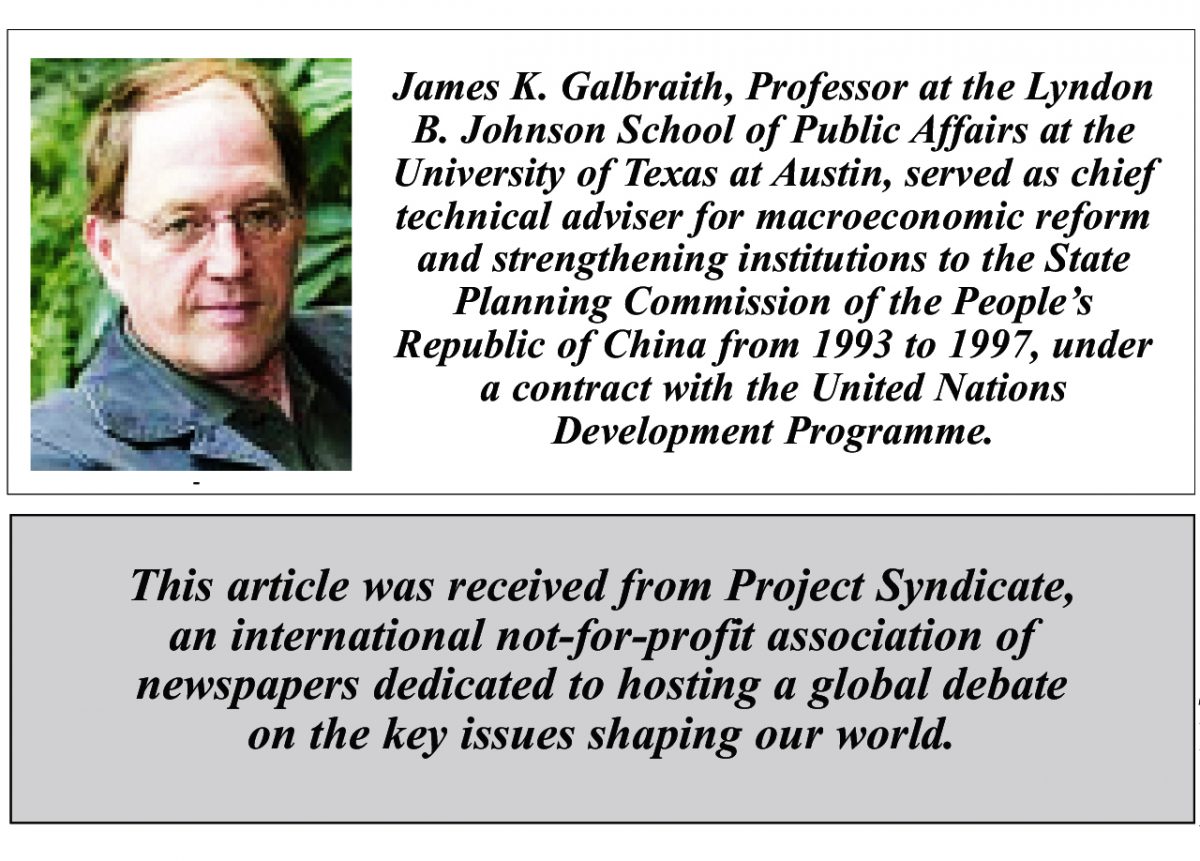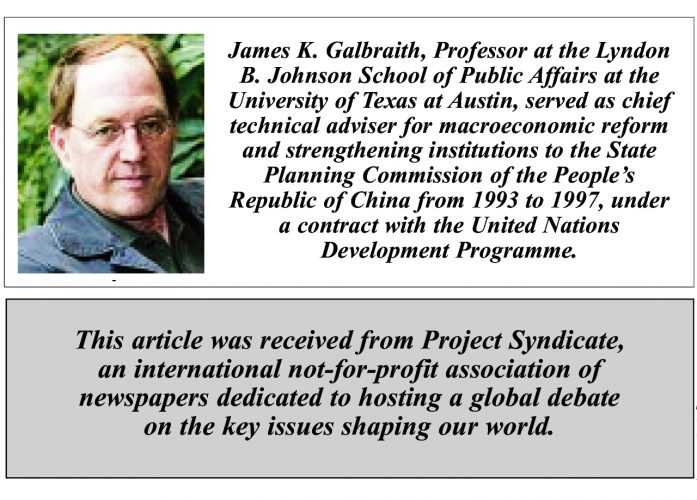TOWNSHEND, VERMONT – Three recent articles in The New York Times have signaled a “new” narrative about China. Only weeks ago, China was America’s fearsome “peer competitor” on the world stage. But now, we are told, it is a wounded dragon. Once a threat by dint of its inexorable rise, now it poses a threat because it is in decline.
US President Joe Biden set the terms of this new narrative. As The New York Times’s Michael D. Shear reports, the White House now worries that “China’s struggles with high unemployment and an aging workforce make the country ‘a ticking time bomb’ at the heart of the world economy.” Biden warned that, “When bad folks have problems, they do bad things,” but he did not explain how, exactly, unemployment and an aging population turn China into a threat.
For his part, Shear gives another reason for China’s newfound decline: “the president has moved aggressively to contain China’s rise and to restrict its ability to benefit militarily from the use of technologies developed in the United States.” Given the scope of Biden’s new semiconductor restrictions, he might have added “and non-militarily as well.”
Meanwhile, Peter S. Goodman, an economics reporter, points to a “slew of developments” supporting the new narrative. These include declining Chinese exports and imports, falling prices “on a range of goods, from food to apartments,” a housing slump, and a real-estate default that has produced losses of $7.6 billion (a sizeable event, but nothing close to the typical US bank bailout). In responding, Goodman writes, “Chinese authorities are limited in their options … given mounting debts now estimated at 282% of national output.”
According to Goodman (and to many economists, including in China), China’s difficulties stem from deeper problems such as a high savings rate, vast deposits in the banking system, a new wariness about real estate, and, consequently, a growing need “to boost domestic demand.” He and his sources agree that the proper cure is “stimulus” – meaning more consumption and less investment.
Moreover, Goodman cites MIT economist Yasheng Huang, who notes that exports plus imports in China total 40% of GDP (much of which comprises final assembly and re-exports of imported components). But while Huang appears to have left Goodman with the impression that reducing this “pass-through” trade would have a big effect, the fact is that the effect would be quite small, since imports are a subtraction from GDP. China is losing merely the value-added, a fraction of the overall product value.
Finally, the Nobel laureate Paul Krugman rounds out the paper’s coverage of China’s “stumble” by offering an economist’s “systemic view.” According to Krugman, China previously grew “largely by catching up to Western technology,” but now it faces the problem of too much saving, too much investment, and too little consumption. It therefore needs “fundamental reforms” to “put more income in the hands of families, so that rising consumption can take the place of unsustainable investment.”
In fact, there is nothing new about Krugman’s key point about savings. Western economists were already pushing that line 30 years ago, when I became (for four years) chief technical adviser for macroeconomic reform to China’s State Planning Commission. “Invest less! Consume more!” – the mantra made no sense to me then, and it still doesn’t today. One wonders what it even means. Should China have more cars but worse roads and fewer gas stations (not to mention subways and high-speed trains)? Does it need more televisions, but fewer apartments to put them in? Does the population need more food and clothing, even though it was already mostly well-fed and decently dressed three decades ago?
True, Chinese families save prodigiously for education, health care, and old age. But they can do that because they have incomes, which come in large part from jobs in the public and private investment sectors. Chinese workers are paid for building the factories, homes, rail lines, roads, and other public works that have transformed China within our lifetimes. Contrary to Krugman, the typical (statistically average) Chinese family is not income constrained. If it were, it would not be able to save as much as it does.
Moreover, if China were to run out of investment projects, incomes would fall, savings would slow, and consumption as a share of income would necessarily rise. But this decline of savings would make Chinese families less secure, deepening today’s slowdown. No wonder the government has taken pains to keep investment flowing through major programs like the Belt and Road Initiative. Even after China itself is fully built (or overbuilt), it still will have plenty to do in Central Asia, Africa, and Latin America. China’s investments have been welcome in those regions, where it is said that, “When we’re engaged with the Chinese, we get an airport. And when we’re engaged with you [Americans], we get a lecture.”
Yes, China’s economy is slowing. It will be hard to scale anything to match the cities and transport networks that are already in place, or the recent campaign to eliminate extreme poverty. China’s main tasks now lie elsewhere: in education and health care, in matching skills to jobs, in providing for the elderly, and in curbing pollution and carbon dioxide emissions. There is no guarantee that these efforts will succeed, but at least they are on China’s agenda. That means they will be pursued in Chinese fashion: step by step, over time.
So, what is the new narrative really about? It is not so much about China as it is about the West. It is about our lead in technologies, our free-market system, and our ability to wield power and to keep all challengers at bay. It is about reinforcing what Westerners like to believe: the inevitable triumph of capitalism and democracy. Above all, it is about our American leaders winning out against “bad folks” who may do “bad things.” It’s a narrative that’s made-to-measure for the 2024 election campaign.
Copyright: Project Syndicate, 2023.










